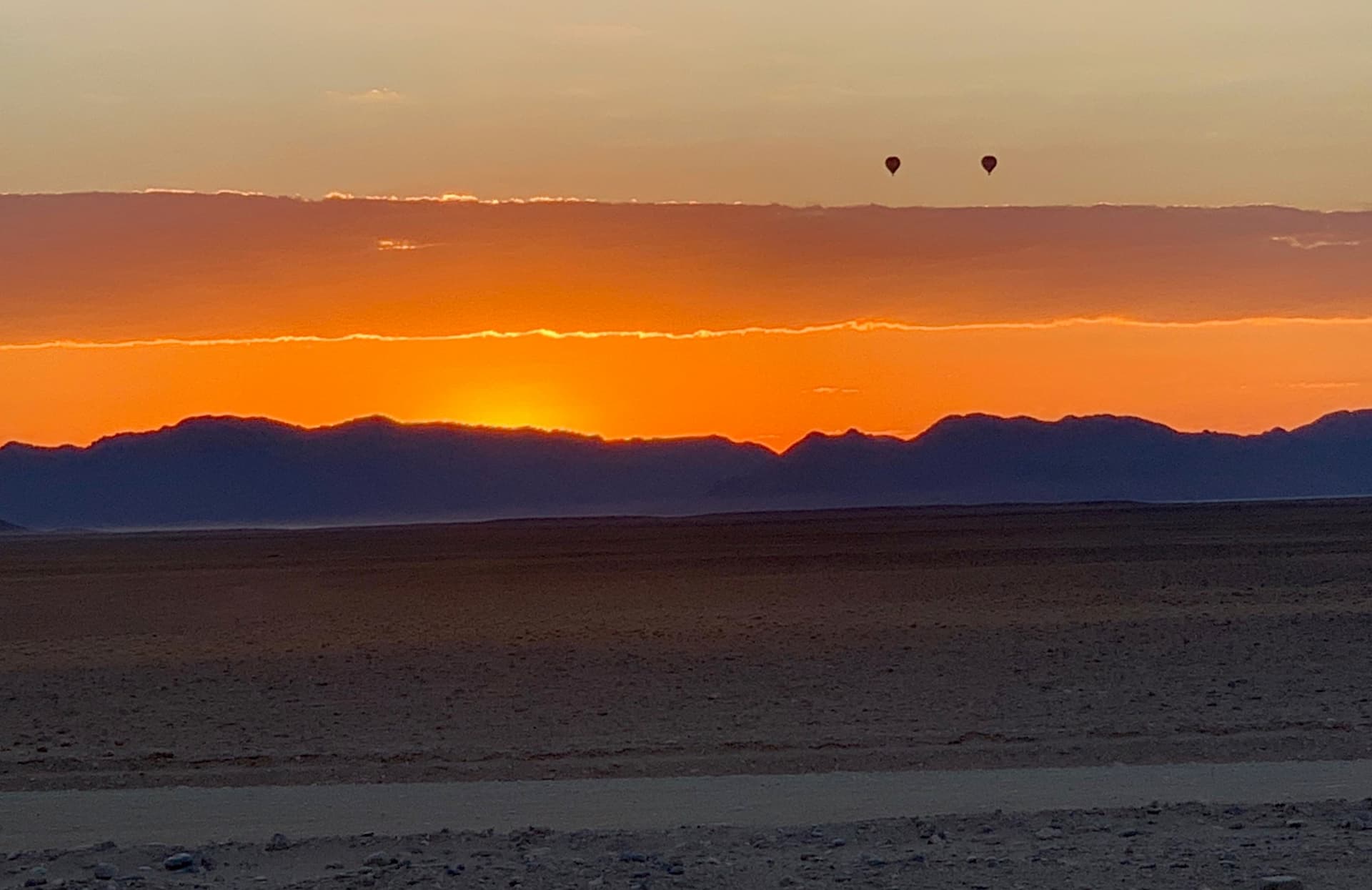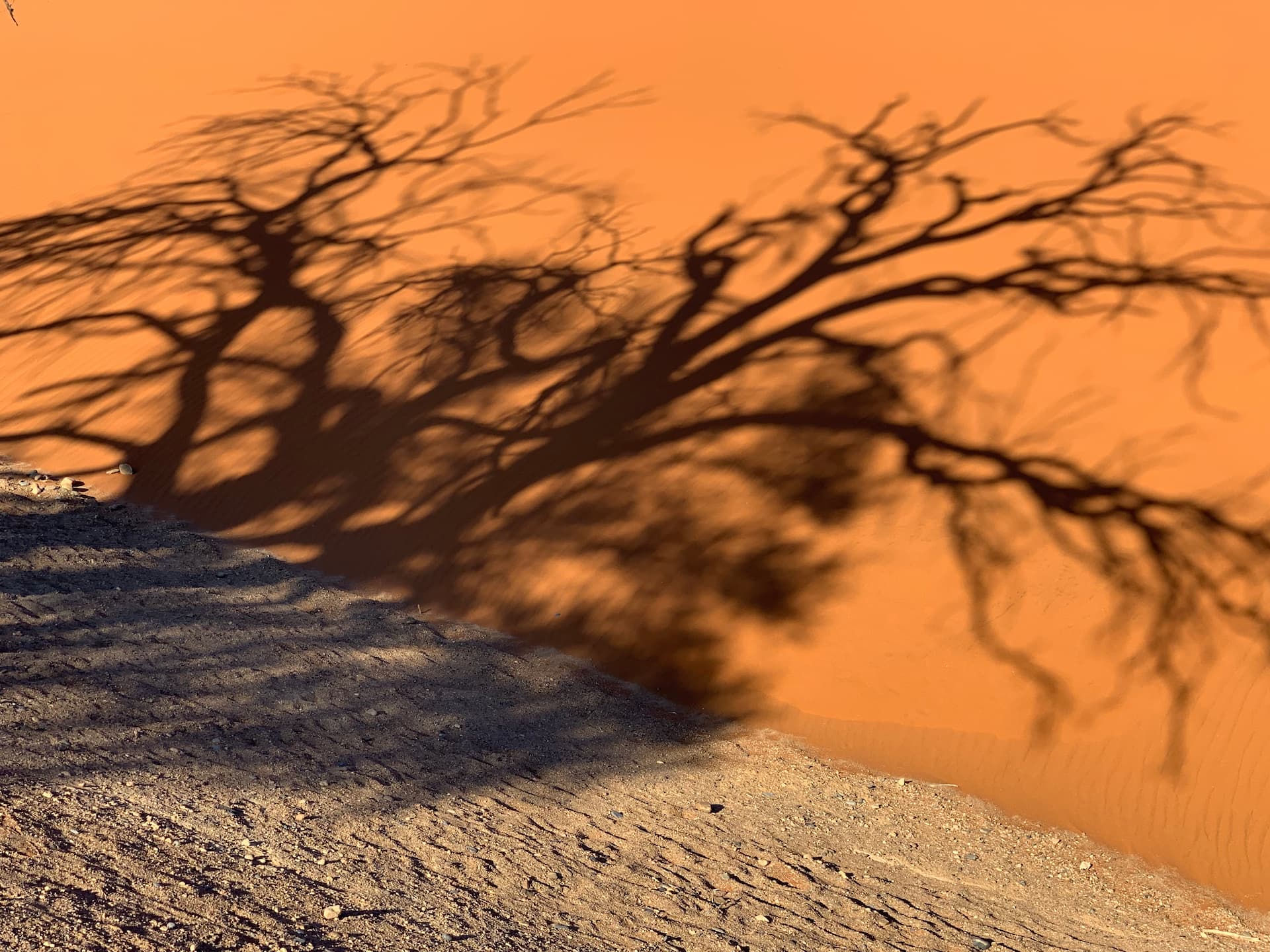Namibia
Namibia. Beyond the beaten track, lies the heart of this breathtaking country, one of the last territories untainted by mass tourism.
Did you know that the desert sings? Have you ever listened to its voice? I had the chance to hear it in Namibia, this stirring country where the colours are vivid, and the sky dissolves all our worries, and pressures. The clearest sky I’ve ever seen. The crisp line which separates the golden sand from the infinite blue. The voice of the desert has a similar vibe to the mantras chanted by Tibetan monks during their long meditations.
I saw from above, like a bird, the incredible spectacle of the largest dunes in the world. Their different and illusory shapes fill this magnificent territory with mystery and wonder. At dawn, in the early hours of the day, when nature seems to hold its breath, the silence has a healing, profound and ancestral value. No ripple disturbs the imponderable stillness of the sand.
But on closer inspection, the immobility disappears, and the dunes teem with life, with the rare species of birds and animals that inhabit them. The unique sightings they have to offer gave me the supreme joy of photographing a lion and an elephant, in this inconceivable scenography. Or the magical power of water, captured in this this incredible shot after the rain, when the desert lilies emerge.
The most important encounter of my trip was with the red people of the Himba Tribe, the inhabitants of the Kaokoveld Desert (an extension of the Namib). Red is the colour of blood, the essence of life. Their ancestors, who came from Botswana, originated on the banks of the Nile. They are cousins of the Maasai shepherds. Hard-pressed, like many other African tribes in the early 20th century, the Himbas experienced genocide. Less than a quarter of them survive presently. Driven away from their lands by German colonists, they fled to Angola, where they had to give up their traditions and livelihood. Only in 1920 were they able to return to Namibia.
Here I met Cayman, a petite woman who looked more like a little girl. If you go beyond appearances, you discover a clever and strong individual who got her name after fighting a crocodile that tore off one of her breasts. Like all the other women in the community, Cayman wears her torso naked and her hair in tails covered in clay and combed with ash. Himba women have acaju mahogany, silky smooth, supple and moisturized skin. In an ancient and secret ritual, they rub their bodies with a cream made by mixing red earth with butter and ash from the sacred fire until their velvety skin glows in the daylight. This mixture protects them from sunburns and insect bites.
The women perfume their bodies with the smoke of the sacred fire where they have burnt fragrant herbs and bark.
“What is sacred fire” I told my guide to ask Cayman. The woman showed me the fire that has been burning for generations and is not allowed to go out, as it symbolizes the connection with the ancestors. She also told me about Makuru, the Creator of the world. He lives in the Heavens and is so good that people are not afraid of him and revere him with love.
A Herero (another Namibian ethnic group) legend says that Makuru and his wife, amungarunga, emerged from the roots of the sacred Omumborombonga tree, which you can admire in one of the photos. This tree has two names: “father of life” and “lead wood”. Due to its weight, it does not float. The Herero believe their precious cattle also descend from this tree, while other animals and tribes descend from common flowers.
The Himba people had the wisdom to resist modernization for a long time, preserving ncestral ways. But today, young people have decided to leave the slow village life in exchange for a modern and, they hope, more enriching world. So they have taken to the city looking for work, sometimes finding only empty promises and cheap alcohol.
This isolated community also caught the attention of researchers. Jules Davidoff, professor of cognitive psychology at Goldsmiths, University of London, noted the striking ease with which ethnic Himba could adapt to technology, even though they were unfamiliar with basics such as pen and paper. He also noted that the absence of a chaotic, modern life makes their sight and focus sharper than ours.
In the heavy mist above the sand, in which the Himba-reddish sun rays float, my memory of Namibia ends.
Here you can see more of Namibia

















